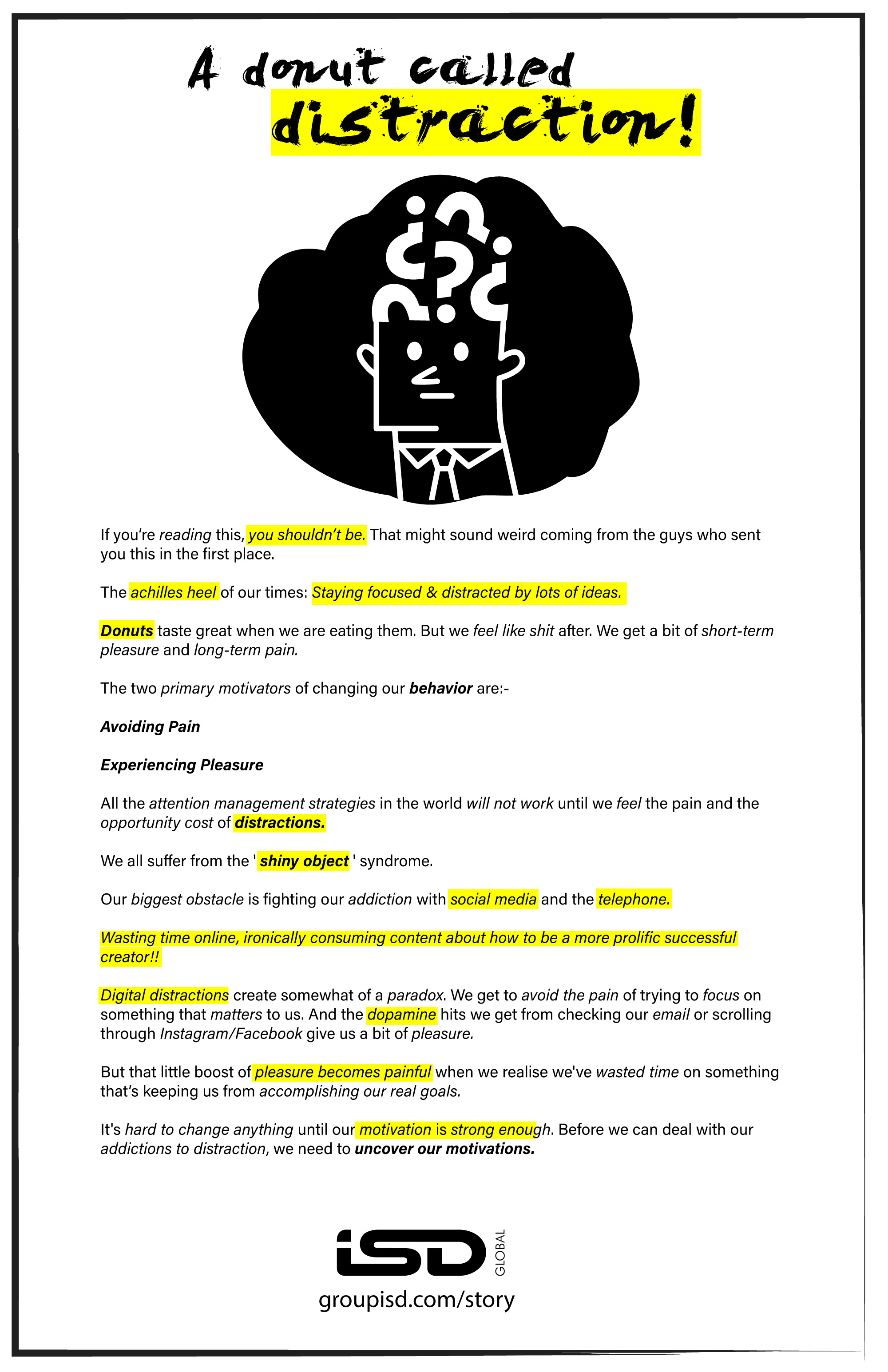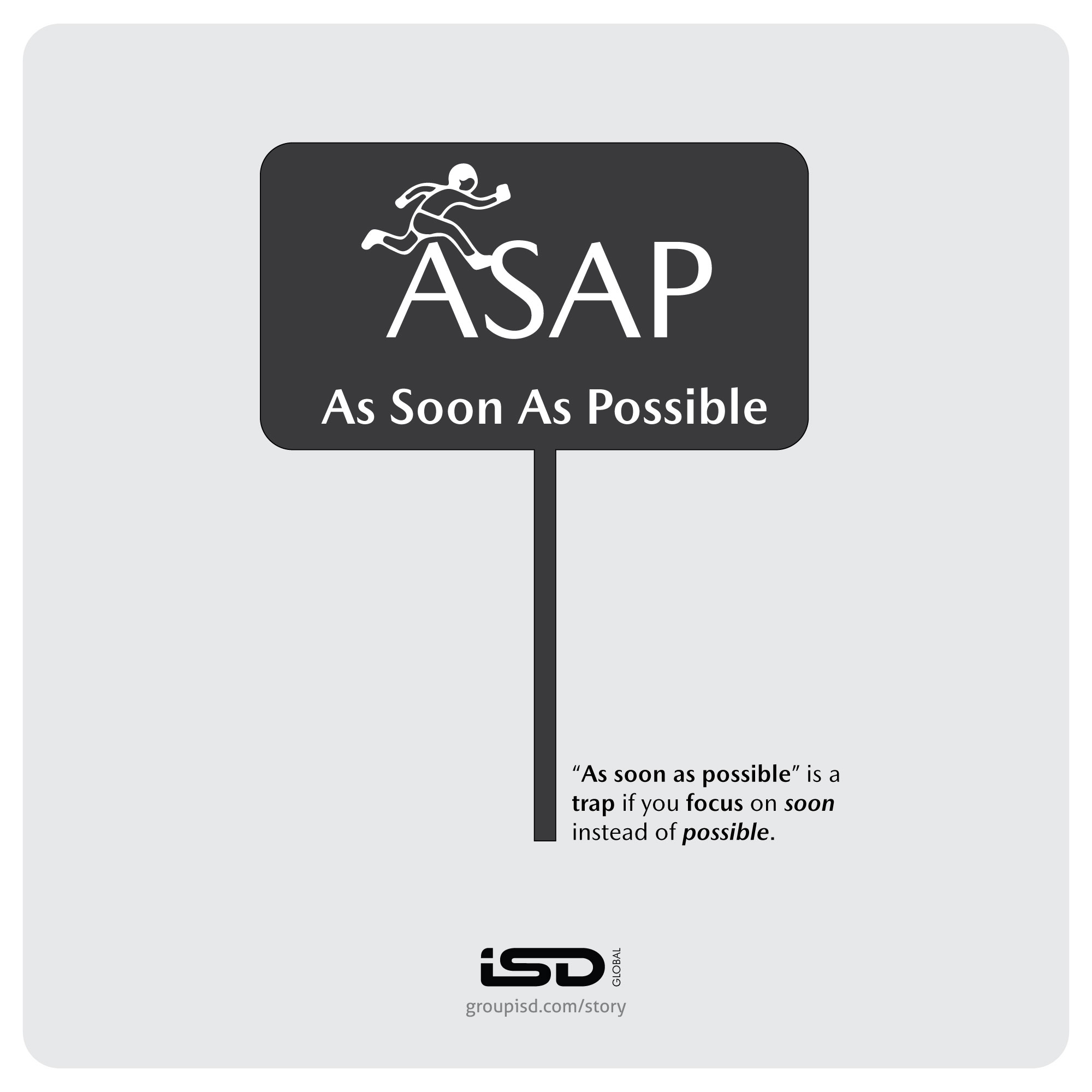The caption of this post comes from a line inspired by Cal Newport’s Deep Work—a book that should be prescribed along with paracetamol in every household.
Caveat: This post is a distraction. But hey, at least it’s a distraction that tells you to stop being distracted. Meta, right? (You don’t have to agree).
Alright, please lean in. Stop scrolling for a nanosecond. I want you to do a quick audit, if you can.
Right now, as you’re reading this, how many tabs are open on your browser? Be honest ( I checked, I had 18 tabs open). Is your phone buzzing within a 12-inch radius of your dominant hand? Is there a podcast about optimizing your potential playing in one ear while you’re trying to focus on this with the other?
We’re all running a bizarre, self-imposed marathon on a treadmill of distraction. And we think the solution is to… take a break from the treadmill by checking Instagram? That’s like a fish taking a break from water by going for a swim.
The truth is this: distraction today isn’t something you fall into.It’s something you live in. Like smog in Delhi winter. Or traffic on Bangalore’s Outer Ring Road. Or cats on the internet—everywhere, all the time, impossible to avoid.
We’ve got it all backwards, haven’t we people? The mantra for the next decade isn’t “don’t get distracted.” That’s a losing battle. The winning move is to flip the script: Don’t take breaks from distraction. Instead, take breaks from FOCUS.
Let that sink in. It’s not the distraction that’s the break. The focus is the heavy lifting. The distraction is the default. And your attention? That’s the most valuable, fought-over currency you have. Every ping, every notification, every just one quick look is a tiny withdrawal from your cognitive bank account. In which your deposits are in any case scanty.
Your focus is a supermodel. Stop letting every cheap notification catcall it on the street.
If we take a quick world tour( we don’t need Expedia or Booking.com for this), we will discover the following including but not restricted to:
The Millennial Hustler( aka The Silicon Valley Techie)- They’ve got the triple-monitor setup, the productivity app that blocks productivity apps, and a standing desk. They focus in 25-minute sprints (Pomodoro, baby!). And their break? Checking LinkedIn and Twitter to see how much more successful everyone else is. They’ve swapped one screen for another. The brain stays in the digital doom-scroll vortex. Zero recovery.
The Indian Student( aka the NEET | JEE | any other competitive exam aspirant)- They’re on a brutal 14-hour focus grind. Their “break”? Mindlessly scrolling through memes on Instagram. They jump from the intense focus of organic chemistry to the dopamine slot machine of Reels. The brain never gets a chance to reset. It just gets a different, more chaotic master. The result? Burnout. Anxiety. And ironically, worse retention. (Cal Newport author of seminal books like Deep Work, Slow Productivity and Digital Minimalism) would say their deep work sessions are being sabotaged by their shallow breaks).
The Corporate Executive (aka The Mid-Life Marathan):Back-to-back Zoom calls. Excel sheets that stretch into eternity. Their break? A quick cigarette or coffee or both while checking office WhatsApp groups. They’ve traded focused stress for distracted stress. The cortisol never drops. This is the antithesis of the productive meditation Newport recommends.
Welcome to humanity’s new bloodstream: distraction.

This isn’t about adding more to your plate. It’s about strategically taking things off your plate so you can actually enjoy the meal. Because, you are not a machine. You are a human being with a finite amount of attention. Stop letting the world steal it from you in tiny, digital nibbles.
We’ve been sold the take a break from your phone wellness jargon so often, we almost believe it. But here’s the heresy: Don’t take breaks from distraction. Take breaks from focus. Because distraction is the new baseline. Focus is the exotic vacation. And if you don’t schedule it, it never shows up.
It’s probably called the currency of the century for a reason. If oil fueled the 20th century, attention is the crude oil of the 21st. Everyone wants a barrel of your eyeballs. Netflix fights YouTube, Instagram fights LinkedIn, Zomato fights Swiggy, your kid fights your boss—and you’re the war zone.

The real luxury now isn’t a Rolex or a Tesla. It’s 45 undisturbed minutes to do deep work. Or read Gulzar. Or just stare at the ceiling fan without checking if your Swiggy order is being prepared.
This disease is widespread and has no boundaries. Geography is history. In Japan, kids are being trained in forest bathing to reconnect with nature—because apparently trees don’t have notifications. In Silicon Valley, tech bros are paying $5000 for silent retreats where the main activity is… sitting. (I know you are suppressing a chuckle-your grandmother has been doing this for free on her charpai forever). In Bangalore, teenagers binge-watch K-dramas at 3 AM and then sleepwalk through their JEE coaching. Their parents, meanwhile, binge-watch stock market tips at 3 AM and sleepwalk through their careers. In Kerala, uncles claim they’re working from home while half their energy is spent refreshing India Today’s election exit polls.
Different geographies. Same disease. We can brand it Distractivitis.
You have been doing different forms of fasting and abstaining for centuries. Karva Chauth. Ramadan. Ekadashi. Lent. Think of focus as fasting. You don’t fast from food forever. You fast for a period to reboot the system. Likewise, you don’t quit distraction—it’s impossible. But you can fast from it by gifting yourself windows of pure focus.
Analog is the new luxury. A paper notebook, a pen, and zero chance of accidentally doom scrolling. And if your neighbor’s dog is in open mic mode, use Noise-canceling headsets. 25 minutes of deep work and then the reward, 5 minutes check memes on Rahul Gandhi or you know who…Pomodoro if you will.
Warren Buffett once said he’s successful because he can say No 99 times out of 100. Not to investments, but to being distracted.
Focus isn’t default anymore. It’s design. Attention isn’t a resource you spend. It’s a resource you invest. And distraction? That’s just today’s monsoon—perpetual, unpredictable, and wetting everyone equally.
Before I conclude, taking the liberty of sharing names of few books for all those who want a bite into the perceived forbidden fruit called focus:
Deep Work by Cal Newport: Culminates in actionable routines for regular, distraction-free work blocks.
Atomic Habits by James Clear: Shows how tiny focus-building habits lead to major change, with hacks for routine and attention.
Hyperfocus by Chris Bailey: Explores balancing ‘hyperfocus’ for productivity and ‘scatterfocus’ for creativity in a world of pings and dings.
Indistractable by Nir Eyal: Offers frameworks to curb both internal and external distractions, reclaiming your attention span.
Essentialism by Greg McKeown: Helps ruthlessly prioritize and say no, freeing up deep-focus time.
Your Brain At Work by David Rock: Unpacks the biology of distraction and how to optimize working smarter, not harder.


